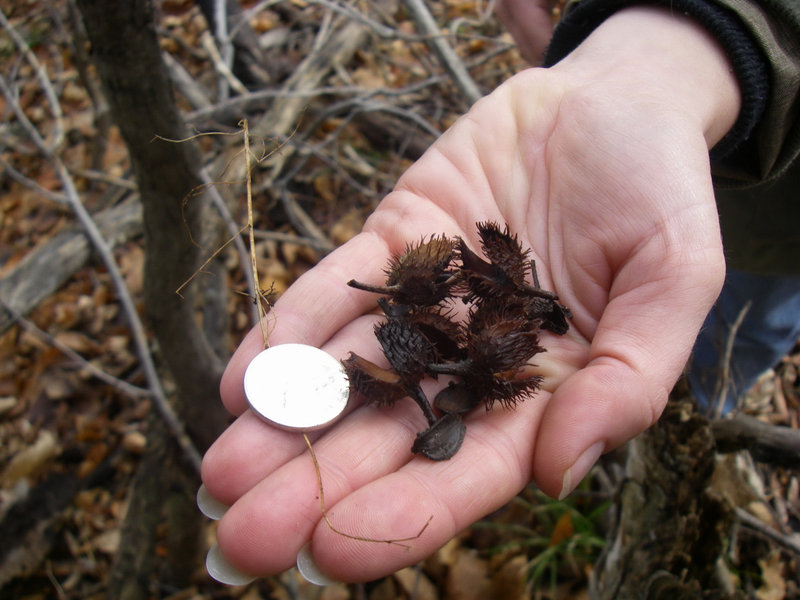Saving the Beech

Pat Kerr
That changed when the forests were hit with the Beech Bark Disease, a complex that involves a scale insect and fungi. The scale insect, Cryptococcus fagisuga, initially attacks the bark, creating a wound. Fungi (usually Neonectria faginata and Neonectria ditissima) then enter the tree through the wound, causing cankers, weakening the tree, and eventually killing it. Because the wood is weakened, the trees often succumb to “beech snap” in strong winds. This, in turn, limits the seed production of this important species. When the trees try to re-sprout from the roots, they succumb to the disease before reaching maturity.
Today, only 1% of beech in the initially hit areas have survived the invasive beech bark complex, which has reached St. Joseph’s Island in Ontario. These are the few trees that have resistance to the disease.
Both Natural Resources Canada (NRCan) and the United States Department of Agriculture (USDA) ran programs in support of this important wildlife tree. They attempted to breed trees that were resistant to the disease. Both programs achieved a measure of success. As Jennifer Koch of the US Northern Forest Research Station said, “We got lucky. About 50 % of the seedlings produced by our first cross between two resistant parents were resistant.”
However, beech is not considered an economically valuable species, and both programs have suffered from reduced federal funding. In the US, the program continues as a multi-agency effort assisted by both states and national forests. In Canada, a number of saplings were bred to be resistant. They showed much promise, and, when the federal NRCan program ended, they were out-planted and fenced in 3 national parks: Brackley Beach, Fundy, and Kejimkujuik. There is hope the parks will distribute seed when the trees become productive.
In the meanwhile, a grower who discovered that we now have the techniques to breed resistant trees, but not the trees themselves, decided to act on the situation. Henri Steeghs of Pleasant Valley Nurseries in Nova Scotia learned the process, got training, did extensive reading on the topic, and is now developing his own genetic orchard. In Steeghs words: “I don’t have funding. I don’t have volunteers. I am trying to do what nature would do in 600 or 6,000 years.”
Steegh’s goal is to protect as much beech genetics as possible. He does this by protecting the trees that show some resistance to the scale insect, and then providing a dating service for them. He collects scion wood (the “live” shoot or branch that can be used for grafting) from the healthiest trees and grafts them on to root stock, using a technique called “hot callus grafting.” This allows faster production and easier collection of beech tree pollen.
It is not always an easy process. Describing his recent sample collection, Steeghs says, “We have 6 feet of snow this year. I am acting in blind faith.”
Snow is not Steeghs’ only difficulty. Beech is difficult to graft. The saplings are difficult to inoculate with the scale insect, and it can often take half a day to get scion wood with a ladder, through March snow drifts. In addition, Steeghs can only get to samples from his immediate area. Although he is accustomed to 100% success rate when he is grafting apple trees, Steeghs sees only 30% success with beech grafting.
“The union must be perfect. Heat tape is used to keep the union warm while the roots are maintained in a dormant state,” Steeghs explains. “You must use a clean, sharp knife and clean hands with lots of light. The grafts are not strong even after 2 years.”
Once the grafting is done, scale insects and eggs are collected from infected trees and attached with twist ties to the seedlings for 6 weeks. Then the trees are examined to determine if the insects penetrated the bark. If they didn't, Steeghs knows that the tree has some resistance.
Steeghs hopes that someday Pleasant Valley Nurseries will have a hedgerow of beech resistant to the insect. These trees will naturally cross, and produce seed having two parents with resistance. “It is not 100% foolproof,” he says. “This is not a commercial venture. It would be a foolish gamble for a livelihood.”
But then he is working alone. Steeghs wants interested landowners to inspect their beech trees before their leaves are out, and protect any that show no signs of the blight. He also hopes those who are energetic will sanitize the area around any healthy trees by removing infected ones. “This is not rocket science,” says Steeghs. “But it is a lot of work.”
**
Pat Kerr is a Northern Ontario gardener and tree grower, who specializes in writing about urban and rural tree care, and won Honorary Membership in the International Society of Arboriculture in 2011.
Photo: Beech seed, which was once a healthy snack for humans, black bear cubs, blue jays and many forest species, is now produced at reduced levels, which is in turn affecting bear cub survival rates. Credit: Dan Kerr.
Not yet a member?
An annual membership to Seeds of Diversity gives you access to our seed exchange, seed grow-out programs, and our online news.

We depend on donations to do our work.

Thank you for your support!
